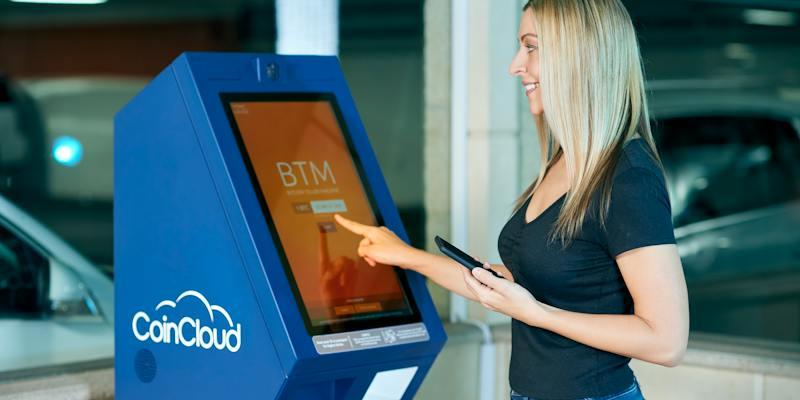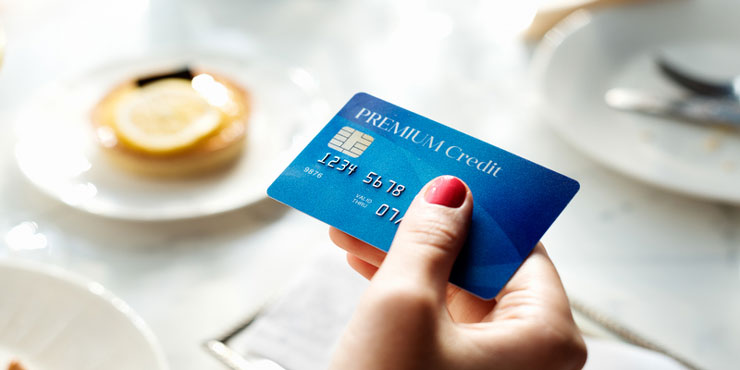Exploring Different Checking Account Options for Financial Needs
Dec 11, 2023 By Triston Martin
Checking accounts is essential for money management. They let you deposit checks, pay bills, shop, and transfer money. Best checking accounts are diverse, giving solutions for individual financial needs. Some accounts provide significant interest rates or perks, while others focus on financial needs. Ideal checking accounts offer low fees and an extensive ATM network. Certain accounts provide interest and early direct deposit payouts. Consider these six checking account kinds while exploring different banks to make an educated selection.
Types of Checking Accounts

Many banks and credit unions provide checking accounts with different characteristics. Considering features, costs, and functions helps compare choices. Account holders might consider unique qualities to meet financial objectives and preferences. Here are a few types:
Premium Checking Accounts
Premium checking accounts, considered the pinnacle of banking services, offer a complete financial package with additional advantages and features. These accounts have higher initial deposits, minimum balances, and monthly maintenance fees but also provide prizes, bonuses, and deposit interest.
Financial organizations have different premium checking account criteria. Higher deposits and financial product use usually mean greater rewards from your bank. This loyalty-based strategy resembles a banking frequent-flier program, where more business means a better experience.
Several large banks offer premium checking accounts with different benefits:
Chase Sapphire Banking
This account waives its $25 monthly charge with a $75,000 average balance. It waives ATM fees, four overdrafts every 12 statement periods, and international foreign exchange rate adjustment costs. To avoid $25 monthly fees, this account needs $10,000. Interest, overdraft protection, and free or reduced paper checks are benefits.
Wells Fargo Portfolio
This account requires $25,000 in connected bank deposits or $50,000 in linked bank, brokerage, and credit balances for a $25 monthly charge. It offers overdraft protection, interest earnings, and ATM charge exemptions.
Premium checking may be helpful if you have large deposits and want a more thorough banking connection. In the present low-interest-rate climate, it's essential to read the tiny print, including interest rates, to ensure the premium advantages match your financial goals.
Traditional Checking Accounts
Traditional checking accounts, or basic checking accounts, are crucial financial tools for daily activities. This account lets customers make checks and use a debit card for purchases and ATM withdrawals. Many financial institutions waive monthly maintenance fees for certain checking accounts. Signing up for direct deposit, keeping a certain daily amount, or using extra financial services can minimize these costs.
Traditional checking accounts may need a minimum deposit. For easy digital transactions, account users can link debit cards to mobile wallets or payment applications. Conventional checking accounts can also connect to savings accounts, retirement investments, and other financial instruments within or outside the bank. Traditional checking accounts are trustworthy for managing funds for those who choose simple accounts without extras. It allows ordinary transactions and secures financial home-base building.
Interest-Bearing Checking Accounts
Like savings and money market accounts, interest-bearing free checking accounts allow account users to earn interest on their balances. Many banks have reduced yields on these accounts due to low-interest rates, although high-interest checking accounts are still available.
Dividend-paying checking accounts make credit unions stand out. Some credit union accounts outperform bank accounts. Even if they don't live in the credit union's state, anybody can join for a nominal fee or gift.
Getting the best checking account interest rates is complicated. Certain banking institutions demand monthly transactions or minimum balances for interest accrual. Interest-bearing checking accounts allow you to make money from your account balance, but they require work, especially if they entail fees or donations. The extra yield may not always be worth the effort, but considering these interest-bearing choices might help optimize profits.
Rewards Checking Accounts
Rewards checking accounts are one of a kind in the world of checking accounts; they work similarly to credit cards in giving incentives for regular purchases. These accounts provide more than just a standard checking account, with extra benefits like cash back, rewards points, or discounts tailored to your buying habits.
The Discover Cashback Debit Checking account, up to a monthly limit of $3,000, provides a notable 1% cash back on debit card transactions. This can result in a fee-free yearly cashback payout of $360. Nevertheless, it's essential to know that cashback reward debit cards linked with checking accounts could come with fees or complex conditions, preventing account users from thoroughly enjoying the perks.
It would help to read the fine print of any rewards checking account you're considering since they may add a rewarding layer to money management. Accessing the entire range of benefits may be more difficult with certain accounts due to restrictions, fees, or complex requirements. A rewards checking account is an excellent way for people who want to get the most out of their regular spending to earn rewards and maximize profits on those transactions.
Students Checking Accounts

Whether it's your first bank account or a step toward financial independence, student checking accounts are handy and tailored to adolescents and college students. High school and college students have different checking needs. Therefore, many banks provide them.
Student checking accounts generally have student-friendly features like:
- Convenient cash access.
- Minimizing account maintenance costs.
- Next-day grace periods for overdrafts that allow settlement without immediate repercussions.
- New Account Sign-Up Bonuses
However, post-graduation account changeover is crucial. Understanding whether the student checking account automatically switches to a standard account is essential since it may increase costs or eliminate perks. Being informed of these prospective changes lets you decide whether to keep your account or try something new with different features or institutions.
Second Chance Checking Accounts
5% of US families are "unbanked," generally owing to account closures due to bad banking history, such as excessive overdrafts or account misuse. This puts high-risk consumers in the ChexSystems register, needing a second opportunity to rejoin the financial system. Second-chance checking accounts help rebuild one's financial background.
Wells Fargo, LendingClub, and Chime provide second-chance checking accounts. These accounts may have a monthly fee like standard checking accounts but may have different spending or deposit limitations. Importantly, they typically allow consumers to switch to a normal checking account after a specific time of sound banking.
For those with banking issues, second-chance checking accounts provide a fresh start. These accounts offer financial security and reestablish the advantages of economic participation by reconnecting with the banking system.





